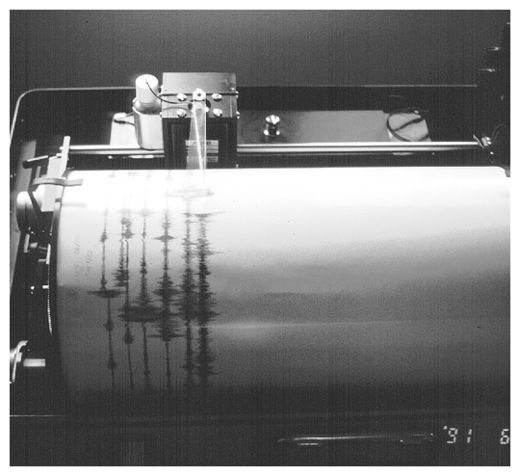
© WikipediaSeismographic reading.
This week, the province of Groningen felt what was thought to be another earthquake, but this was tuesday evening confirmed more likely to be a sonic boom. The Royal Netherlands Meteorological Institute (KNMI) confirmed
no activity was seen on a seismograph, but the institute did record a bang in the atmosphere to the north of Ameland, a spokesperson says.
A little after 10 on Tuesday evening, Twitter blew up with messages about the
earthquake. People also called the media with the report. The messages claimed it was a big one, too.
Most of the tremors were felt in a relatively small area, but reports also came from Drenthe and south-east Friesland. Richard van Dijk, a resident from Loppersum, where earthquakes are frequently experienced from the fracking by NAM in the area, reported that the front of his house was sinking.
On Twitter, residents from Ulrum, Middelstum and Loppersom said they felt tremors. People living further away like Groningen, Assen and Haulerwijk, reportedly felt "quakes".
Expert Theo Jurriens from the Rijksuniversiteit Groningen expects that it was not a meteor, because there were no messages from eye witnesses. "Then it would have been a big one, and that we would have seen", he said around midnight. According to the NOS, the KNMI will still investigate this possibility.
"Possibly, it was a jet passing through the sound barrier", Theo says.
Defense claims no responsibility for the bang. "But it is not clear. It could be an aircraft from another country that was flying above the North Sea" Jurriens says.
In 1992, the bang of a jet was heard, but nothing was seen, and even the church got damaged.

Comment: Wow, the media has bought this line about military jets and 'frost quakes', hook, line and sinker!
From Meteorites, Asteroids, and Comets: Damages, Disasters, Injuries, Deaths, and Very Close Calls: